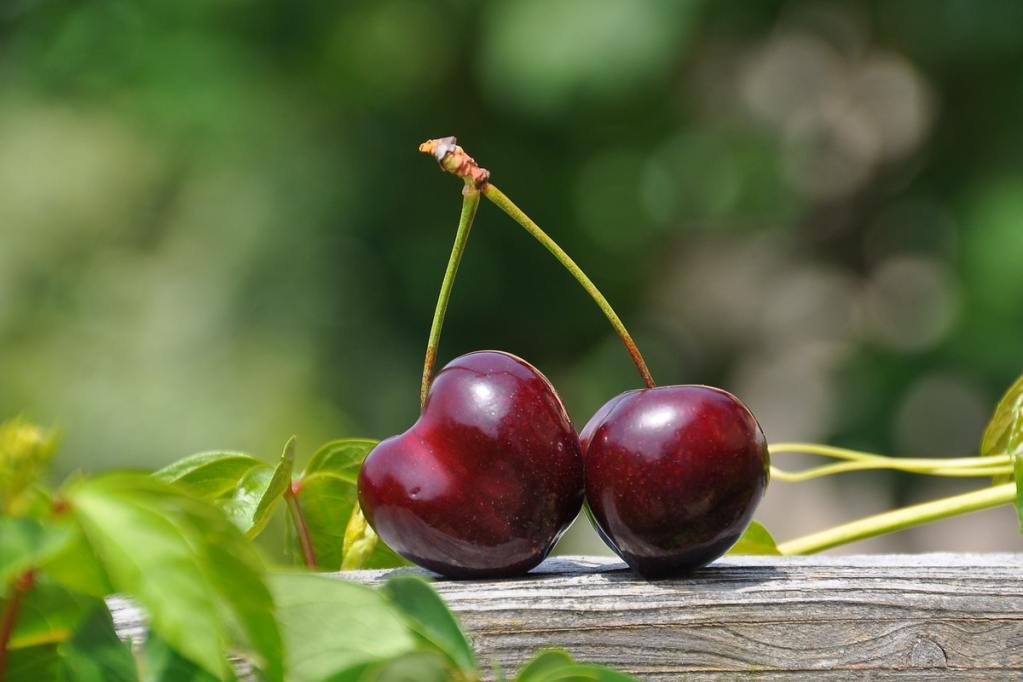Cherries are excellent for toppings or snacks on their own. They’re a great way to add some color and a burst of extra flavor to a variety of dishes and desserts. You can get cherries at the supermarket, of course, but you can also grow your own! If you’re interested in growing cherries at home, you’ll need a cherry tree. Here’s a handy guide for planting and caring for cherry trees. We’ll tell you where to plant them, how to care for them, what variety you should choose, and any special concerns such as diseases or common problems.

Choosing where to plant cherry trees
Choose an area that gets consistent sun to ensure healthy growth and regular production. The area should have well-draining soil, and it should be soft and moist at the time of planting. The best times to plant are spring and fall when the weather is mild. The ground is often harder during winter, when it may be frozen, and in some climates during the summer, when exposed ground may be partially baked.
Cherry trees often have deep root systems, so take care to avoid areas with shallow soil or rock beds below the surface. Some cherry varieties will self-pollinate, while others will not, so you may need multiple trees. Cherry trees will need to be planted 20 to 40 feet apart, depending on variety, so make sure you have plenty of space for all your trees.
When planting, make sure the hole you’re putting the tree into is deep enough. You want a hole that is as deep as the root ball and twice as wide. Fill the hole in carefully, so that the tree is standing straight up. Don’t forget to water it and give it a nice layer of mulch!
Once it’s planted, you can expect your first harvest about three to four years after planting. After it has bloomed, when it begins to produce fruit, be sure to cover it with garden netting. Otherwise you can expect birds to make off with your harvest.

Cherry tree varieties
Before discussing individual varieties, it’s important to talk about the major categories. There are sweet cherries, which can be eaten on their own, and are often used to top desserts or as ingredients. Sour cherries, on the other hand, are typically not eaten on their own, and are almost always used for jams, jellies, preserves, and pies. Sour cherry trees are also generally smaller, meaning they take up less space, and are self-pollinating.
There are also full sized versus dwarf varieties. Dwarf varieties are smaller, as the name suggests, taking up much less room than other varieties and bearing less fruit. However, dwarf varieties also typically produce fruit faster, in about three years rather than four.
There are a lot of individual varieties for sweet and sour cherries, and it’s a good idea to buy a few cherries from several varieties before purchasing a full tree so you’re sure to get what you want. You also might consider taking a look at your local farmers market and speaking to anyone in your area who grows cherries. They may have special insight into what varieties work best with your soil and climate.
In the U.S., the most common sweet cherry variety is the Bing cherry, while Europe prefers the Kordia cherry. These cherries have a lovely dark color and are sweet and juicy. For sour cherries, the favorite is far and away the Montmorency cherry. They’re bright red, smaller, and go great in pies.

Special concerns about cherry trees
Cherry trees are susceptible to some common diseases, although different varieties may have varying levels of resistance to them. Arguably the worst of these problems is rot, which can attack the roots and, once it sets in, is incurable. However, rot is easily prevented by making sure the soil drains well. Rot only becomes an issue if the soil stays wet for too long.
For most other diseases, such as black knot fungus, cankers, and blight, the treatment is to prune the infected area to prevent spread. In general, look for any unusual growths on the tree, and prune the infected branches below the growth.
The fruits of the cherry tree are often attractive for insects. While birds can be kept at bay with netting, insects typically require a pesticide spray. Be sure to read the instructions carefully, and wash your fruit thoroughly before eating it.
Cherries are fun to eat and add a little something extra to any dessert or fruit platter. Whether you’re serving up sundaes or a sweet fruit cocktail, having your very own cherry tree is a great way to have fresh cherries. Make sure you have plenty of room, and plant your tree or trees somewhere sunny where water doesn’t tend to pool, and you can have fresh cherries in three to four years! See the beautiful blossoms in spring, and then enjoy the literal fruits of your labor!
Editors' Recommendations
- Plant these stunning flowering shrubs for a showstopping garden display this spring
- 3 incredible reasons why you should be using coffee grounds in your garden
- Have a gross mealybug infestation on your plants? Try one of these remedies
- These plants should be among the first you plant this year
- Why mulching might be the best option for your old Christmas tree




